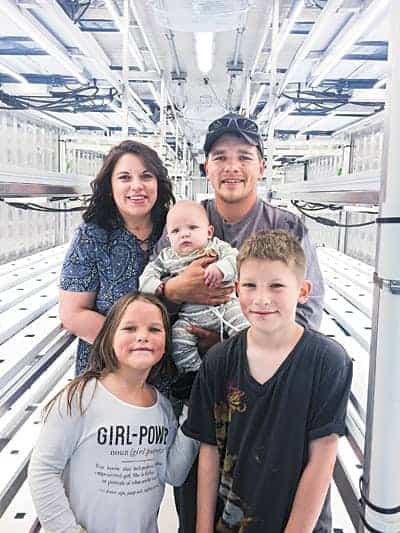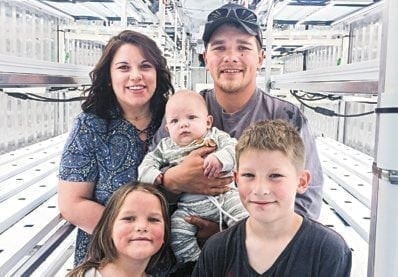Qawalangin tribal member Blaine Shaishnikoff grew up in Unalaska, Alaska, where he now runs a hydroponic growing system in two sea cans to supply the community with its locally-grown produce.

"Our people have lived here for thousands of years and have always provided for themselves by living a subsistence lifestyle. Providing my community and my region with a locally-grown, quality food source is something that I feel very strongly about and it is what we’re trying to do," said Shaishnikoff in an Oct. 6 news release.
Unalaska/Dutch Harbor's population is less than 5,000.
Shaishnikoff's funding partner is the Aleutian Housing Authority, a non-profit with the primary goal of providing affordable housing. Together they formed Aleutian Greens. Nunavut News could not reach Shaishnikoff, but spoke with deputy director of the housing authority Erin Wilson.
"Our hope is to reduce our region's reliance on shipped produce and supply our people with the first ever, locally-grown food source," said Wilson.
When Vertical Harvest Hydroponics went to Shaishnikoff's home town in the Aleutian Islands, located between the Bering Sea and the Gulf of Alaska, in July to teach him the system, "they planted 24,000 plants just to get him (Shaishnikoff) used to the cycle and the process," Wilson said.
The result was a green payload distributed to the police department, stores, the seniors' centre, the city, corporations and boats, not to mention the communities of Akutan, Cold Bay and King Cove via the M/V Tustumena on its last voyage of the season.
"Everybody was very impressed with the produce. The stuff we're growing in Dutch Harbor is far better than the stuff I can buy here in Anchorage," said Wilson.
The excellence of the free produce has led to several supply contracts, with another big one on the way.
"But you need somebody on the ground there who will be running this thing day and night. It's very high-tech. There's a lot to pay attention to. You would not believe the little details that pop up every day that we did not think of or could not think of," said Wilson.
Alaska communities face similar transportation challenges as Nunavut communities: an unreliable airline and seasonal maritime shipping.
"They're not going to pull into a port for a box of lettuce. But I'm willing to put a box on a kid's lap who's flying down there for a basketball tournament."
Each container is capable of producing 450 heads of various lettuce types per week, as well as a large variety of herbs and other leafy greens. The hydroponic method allows for a much shorter growing cycle than traditional farming – as short as six weeks – and is not restricted by weather or seasons.
The electricity is not cheap, said Wilson, but it was worked into the model from the start.
"The freshness, the taste and how long it lasts is where we have the grip. They are so tired of getting bad produce. Even the stores will tell you they have to dump half of it (imported produce). People are just so excited, knowing your farmer, knowing where it came from … There's a sense of pride."
